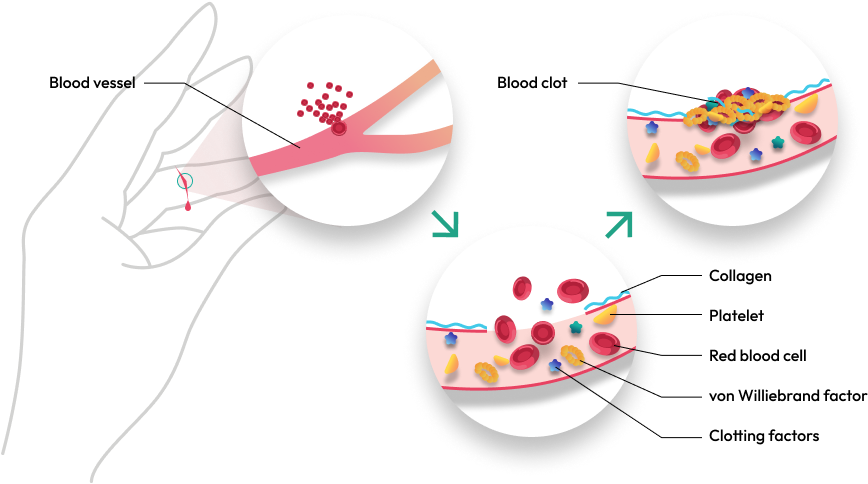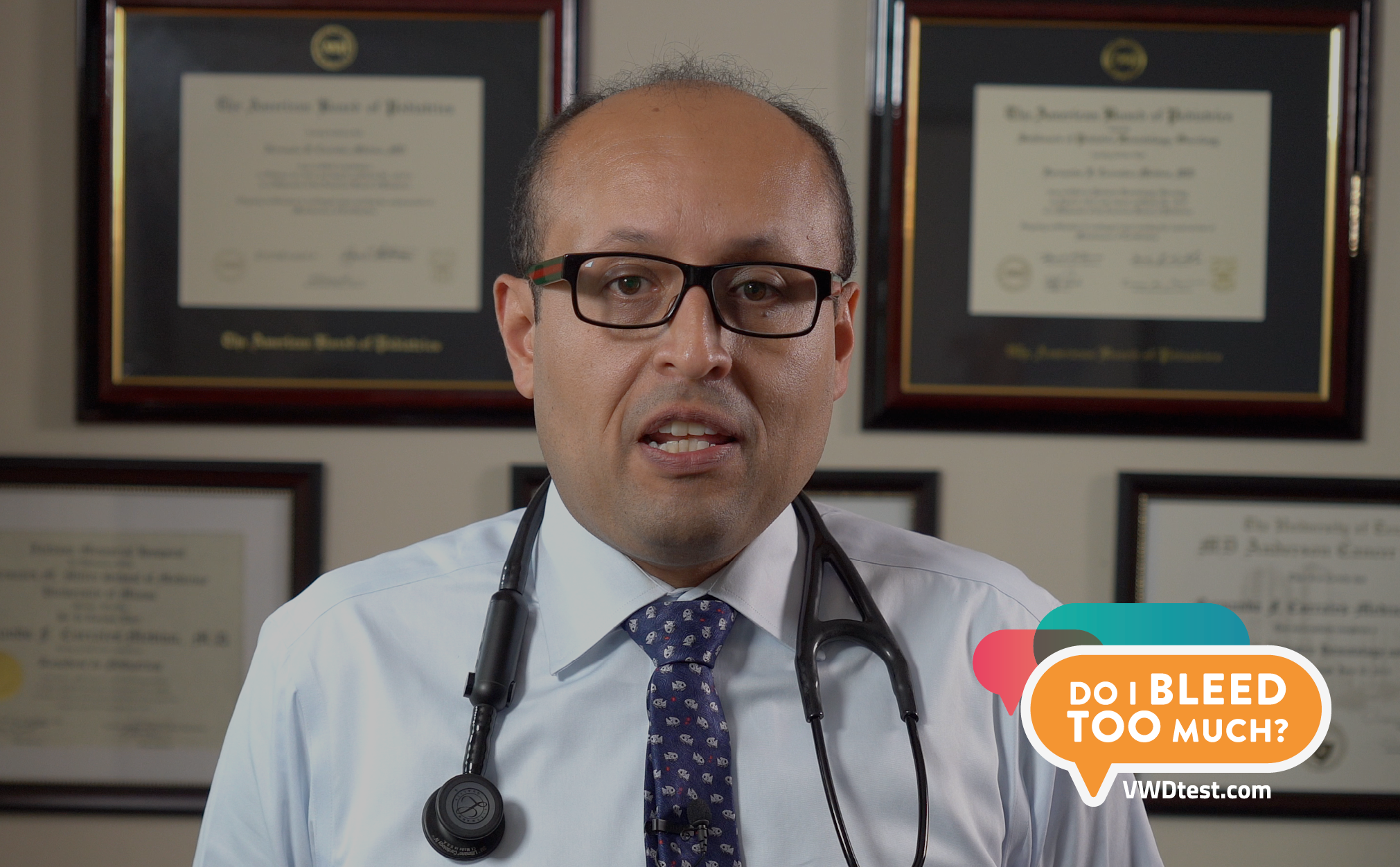
Learn more about von willebrand disease
Von Willebrand disease (VWD) is
the most common bleeding disorder
When a blood vessel is injured, some of the red blood cells stick together to close the wound and stop the bleeding. This process is called clotting. In people with bleeding disorders, such as VWD or haemophilia, blood clotting does not work properly. Therefore, people with VWD tend to bleed more frequently and for longer, for example nosebleeds, gum bleeds, or after minor injuries . Women with VWD often experience heavy menstrual bleeding. In people with VWD, the bleeding is caused by defects in the von Willebrand factor (VWF) protein, which is important for blood clotting.1


Von Willebrand factor (VWF) is important for blood clotting
VWF is a protein that circulates in blood. It is produced by cells in blood vessels and bones and released into the bloodstream. In case of an injury, VWF works together with other proteins to stop the bleeding by forming a blood clot. In people with VWD, the body does not produce enough VWF, or the protein does not function correctly. As a result, blood clotting does not work properly and bleeding may be prolonged.2
There are three main types of VWD
-
Type 1 VWD: Around 3 out of 4 people with VWD have type 1, making it the most common type of the disease. These people have low levels of the VWF protein.2
-
Type 2 VWD: People with type 2 VWD have VWF protein that does not work properly.2
-
Type 3 VWD: Often more severe than type 1 or 2, this is the rarest form of the disease. People with type 3 VWD have very low levels of the VWF protein.2
What’s the difference between VWD and hemophilia?
Both VWD and hemophilia are bleeding disorders. People with either disease have a higher risk of bleeding, but the parts of the body where bleeding usually occurs are not the same for people with VWD or hemophilia. The disorders are caused by defects in different proteins: VWD is caused by defects in the VWF protein, while hemophilia occurs due to partial or complete lack of proteins called factor VIII and factor IX. These different causes mean that the diseases have different treatments.3,4
VWD can be treated
There is no cure for VWD, but there are effective treatments. Most people with VWD have very mild symptoms that they can manage themselves in their day-to-day lives. However, people with severe forms of VWD may have more serious and frequent bleeds, with greater impact on their lives.1
If you have VWD, it is important that you register with a local treatment center that specializes in bleeding disorders. The staff at the treatment center will answer all your questions and guide you in managing the disease, so that you can live a normal life.
We also recommend getting in touch with local patient associations. There are more people with bleeding disorders than you may think, and they will be happy to share their experiences with you.

Up to 1% of the world population may have VWD
VWD is usually inherited and affects both males and females of all ages, including children. Women are more likely to exhibit VWD symptoms than men due to bleeding occurring in
menstruation, pregnancy and childbirth.
Many people have mild symptoms and may not realise they have VWD.
People with VWD often wait many years for their diagnosis
It is often difficult to tell if bleeding is normal or not. Moreover, many people are not aware of bleeding disorders such as VWD. For these reasons, people with VWD often have to wait for several years from the first bleeding symptoms to the final diagnosis. This delay is typically greater for female than for male patients. Without diagnosis and treatment, patients may suffer from frequent bleeding, iron deficiency, pain, and reduced quality of life. Even if bleeding symptoms are mild in daily life, there is a risk of serious bleeding during surgery or following an accident.1
Therefore, it is important to be aware of bleeding symptoms and bleeding disorders, such as VWD. If you are unsure about any bleeding you have experienced, please take our bleeding test.

A bleeding history and laboratory tests are needed to diagnose VWD
VWD is rare and not every doctor is familiar with the disease. Therefore, a definitive diagnosis should be made by a doctor who specializes in bleeding disorders. A diagnosis of VWD is always a process. Initially, your doctor needs to understand any bleeding that you and possibly other members of your family may have experienced. This information is called “bleeding history”. To assess the complete bleeding history, your doctor will ask you a series of questions. If the bleeding history suggests that you may have a bleeding disorder, your blood needs to be analysed in a specialized laboratory.1 With the results of the blood tests, your doctor will make a definitive diagnosis.
The sooner you have your diagnosis, the sooner you can start making informed choices about your treatment and lifestyle.

